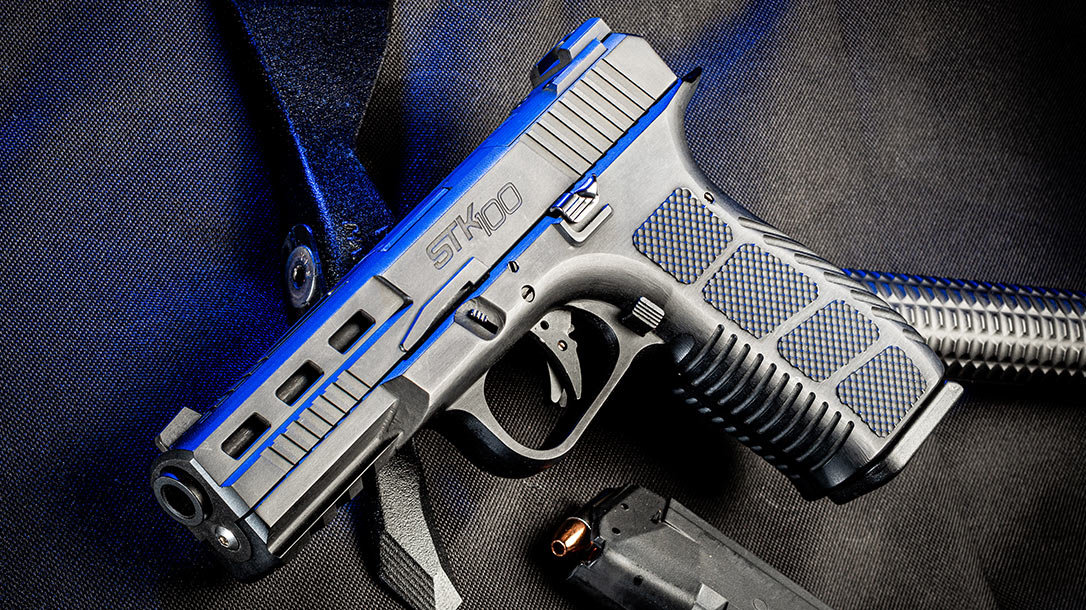Who said all striker-fired handguns chambered in 9mm have to have polymer frames? No one I know. Even so, the popularity of the Glock 17 and all the other polymer-frame striker-fired pistols on today’s market have probably planted that thought in the minds of a lot of us. That may be about to change because Rock Island Armory introduced an aluminum-frame striker-fired 9mm pistol called the STK100. And it’s beginning to turn heads.
The Rock Island STK100: Knock-Off or New?
This pistol resembles the full-size Glock, but important differences set it apart. It weighs about 5 ounces more and its balance is distinctly grip-heavy. Part of the reason for this is that its steel slide has seven weight-reducing ports located on its top and sides in front of the chamber.
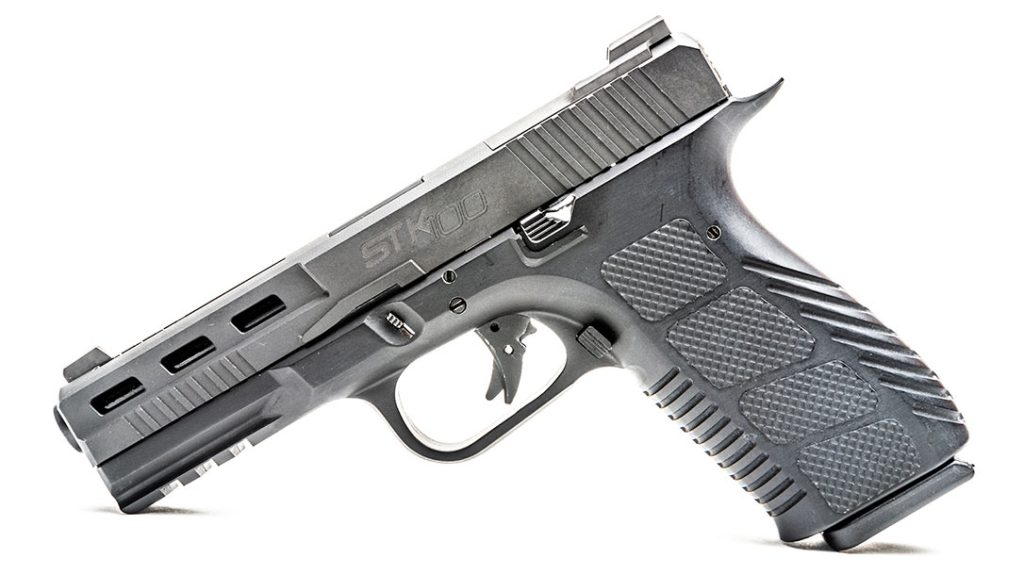
Advertisement — Continue Reading Below
A second important difference is that the STK100’s grip angle is the same as an M1911. Glocks point high for many shooters, while the 1911 points dead on. For those of us whose first pistol was a 1911 or a Browning P35, it takes time to develop the habit of pointing the pistol downward.
A third major difference is that the STK100’s aluminum frame is more rigid than most pistols with polymer frames. Because of this, the STK’s frame doesn’t flex when it is fired like most polymer frames do. Most people don’t notice the flexing, but the instability due to it can affect accuracy. This phenomenon would primarily be relevant in competitive events like Bullseye.
The last major difference is the effect of the aluminum frame on the recoil. All other factors being equal, heavier guns generally develop less recoil and get back on target a little faster. This is important for IDPA matches, shooting steel, and self-defense.
Advertisement — Continue Reading Below
Lesser Differences
Lesser differences between the STK and most other striker-fired pistols include the oversize triggerguard, with room for a gloved finger. Likewise, it has an extended beavertail at the rear of the grip. Additionally, it has a two-piece “clamshell” frame held together with Allen-type screws. Lastly, the STK100 has a built-in mounting platform that contains the rear sight.
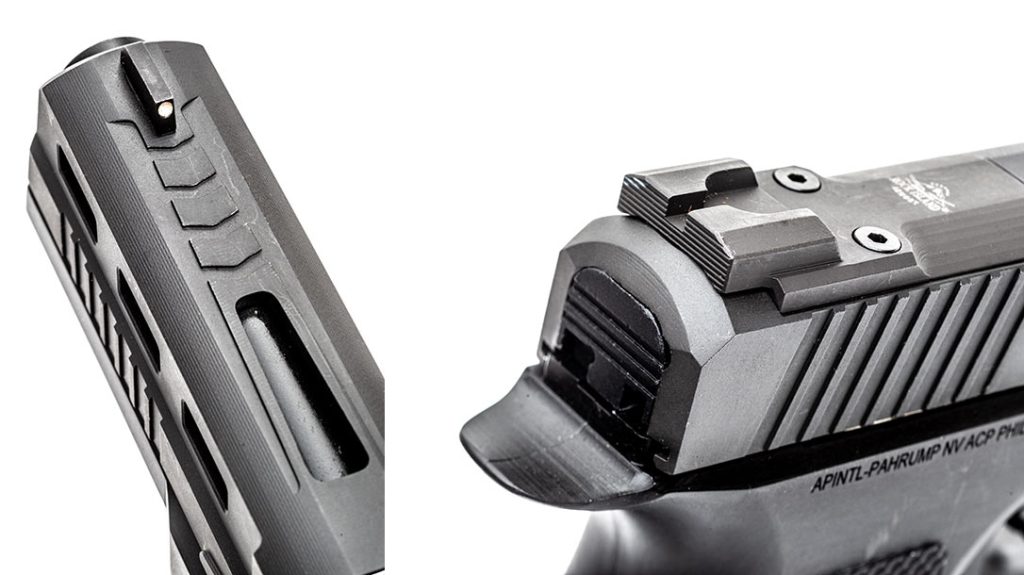
It only took a couple of minutes to loosen the two screws that hold the plate, remove it and install a Vortex Venom red dot. In addition to being clear, the Venom has two white lines on the rear of its body that can be lined up with the front sight to form an accurate sight picture in case of a sudden battery failure or other equipment problem.
Advertisement — Continue Reading Below
All of these features make the STK100 a Glock-pattern pistol with a unique personality. It looks similar to a Glock 17, yet it has some significant differences in the materials used and how it handles recoil. This clearly sets it apart from the herd.
On the other hand, some of its internal parts are reported to have the same specifications as parts used in the G17. This means that existing after-market Glock parts might be able to be used to customize the STK100. However, check with a gunsmith first.
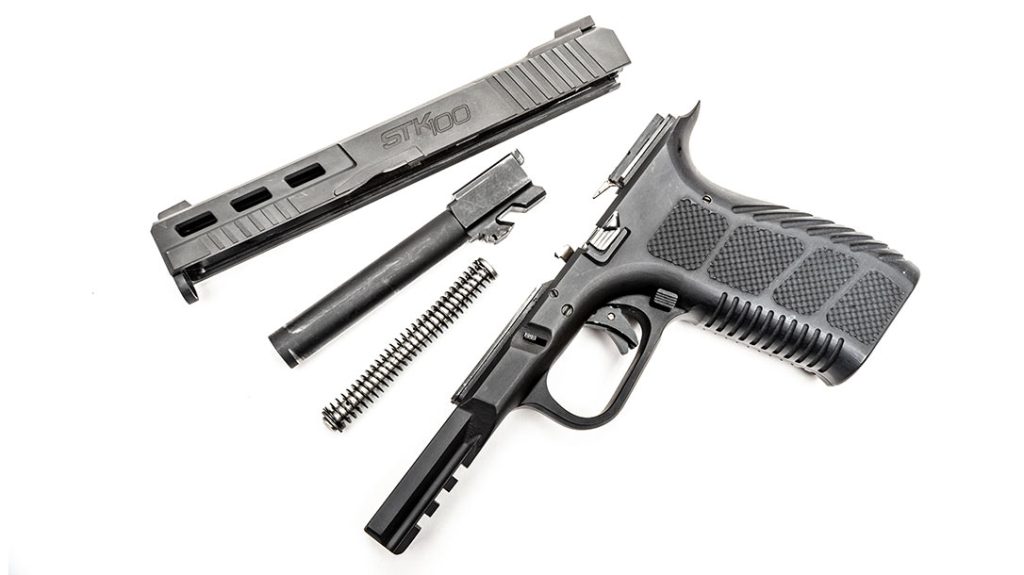
Advertisement — Continue Reading Below
That presents a bit of a paradox because the STK100 is different enough to be unique, yet similar enough to possibly use custom parts designed for a Glock 17, which, if installed, would make it even more unique!
On The Bench
Before going to the range, I always place the firearm to be evaluated on my workbench, to examine it. I like to check the quality of manufacture and clean out any firing residue and/or packing oil.
I’m especially careful with firearms that come from overseas. This is because they are often covered with significant quantities of oil and/or grease to prevent rusting, given that they are often shipped by sea. Once the gun is cleaned and examined, I lightly lubricate it and take it to the range.
Advertisement — Continue Reading Below
Overall, the quality of the STK100 looked good. There were a few sharp edges at the forward end of the dust cover accessory rail and at the rear corner of the magazine floorplate. In addition, there were some very fine manufacturing marks at the upper rear portion of the grip.
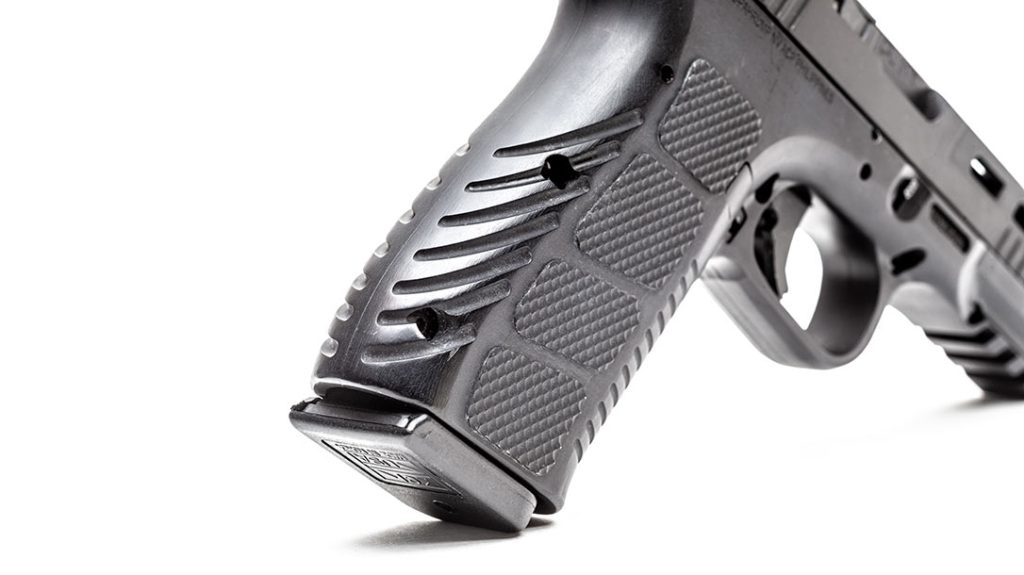
Its 5-pound trigger pull was also a bit stiff and gritty. However, this can probably be remedied by a little gunsmithing. None of these findings could in any way be considered show-stoppers. On the other hand, I was impressed with the even fit of the two halves of the aluminum frame. Not to mention, the smooth cycling of the slide and the very good overall quality of the machining.
Advertisement — Continue Reading Below
Making The Grade
Three loads were used to test-fire the Rock Island STK100. They were Norma’s 108-grain MHP, Hornady’s 135-grain +P Critical Duty and Armscor’s 124-grain FMJ. The Armscor ammo was used for sighting in tactical drills, and the other two tested accuracy and velocity.
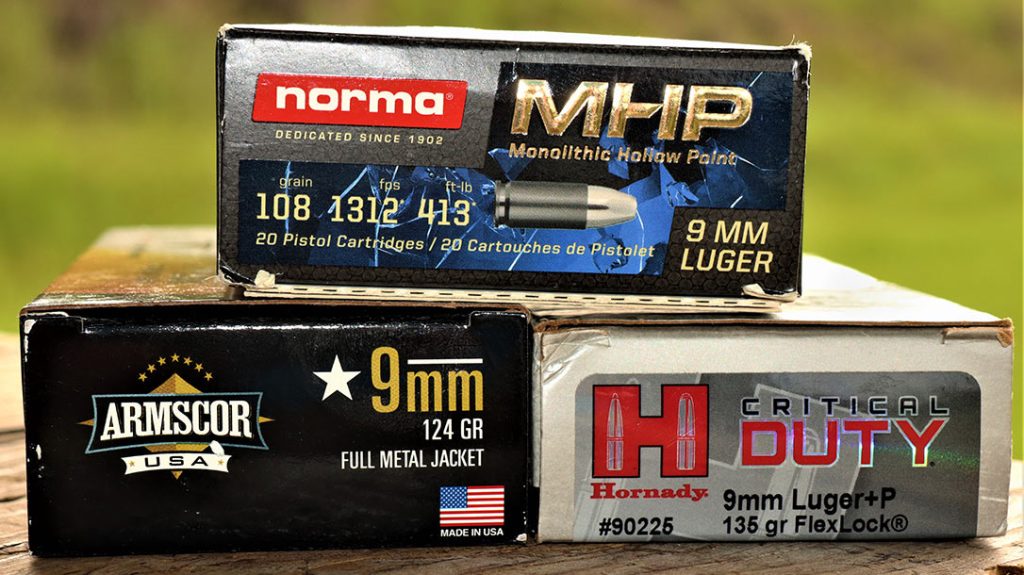
Once the optic was sighted in, accuracy tests were conducted at 15 yards. This is about as far as most civilians would normally shoot in a critical incident. Both duty loads showed good accuracy. The Norma load shot an average five-shot group of 2.19 inches, and the Hornady’s average group was not far behind at 2.66 inches. Both loads were clearly accurate enough for tactical purposes at reasonable distances.
Advertisement — Continue Reading Below
When it came to velocity, the Norma load produced an average of 1,131 feet per second (fps) with a tight extreme spread of only 29 fps. This converted to an average energy of 307 foot-pounds (fpe). This is at the lower end of the 9mm spectrum and significantly below the 413 fpe stated on the box.
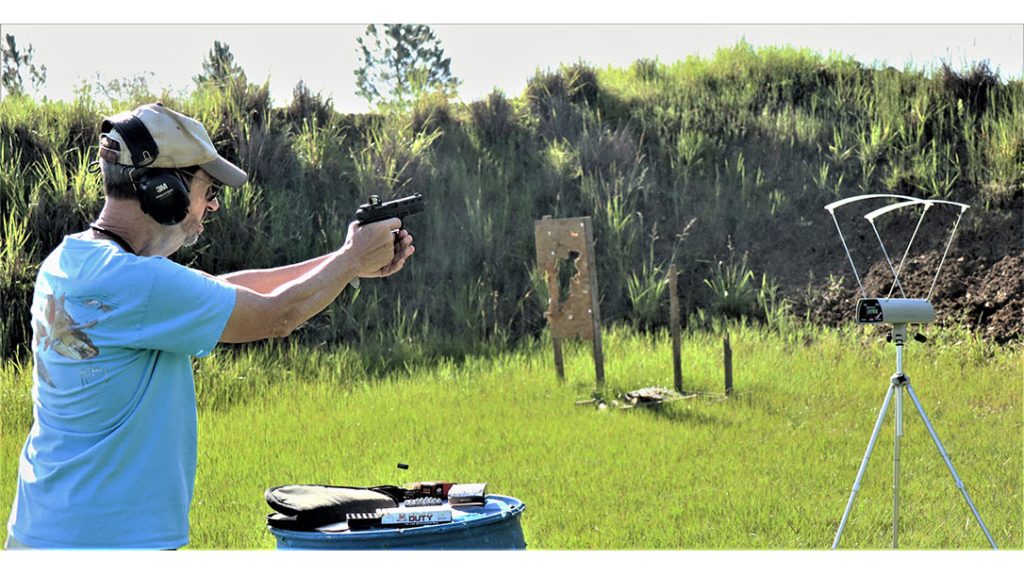
The Hornady Critical Defense load produced 1,065 fps. with an extreme spread of 23 fps. This generated an average muzzle energy of 340 fpe. Taken together, its consistent accuracy and velocity indicate quality in the construction of the gun. It also speaks to the quality of these two duty loads.
Advertisement — Continue Reading Below
Scenario-Based Tactical Drill
The scenario-based tactical drill was conducted at 10 yards using a picture target from Law Enforcement Targets. Action Target owns Law Enforcement Targets.
The scenario was as follows: You are a young person just starting out in life in a major U.S. city. To save money, you’ve moved into a low-rent basement apartment below street level.
Like many basement apartments in big older cities, the entrance is a stairway behind the concrete foundation wall. A handrail leads from your front door up the steps to street level. The handrail then connects to a heavy railing along the sidewalk.
As you get about ten yards from the steps, a would-be armed robber pops up from the upper steps. He turns toward you with a 1911 pointed at you. He’s using the handrail and railing to protect vital organs in the left side of his chest, shoulder, and abdomen.
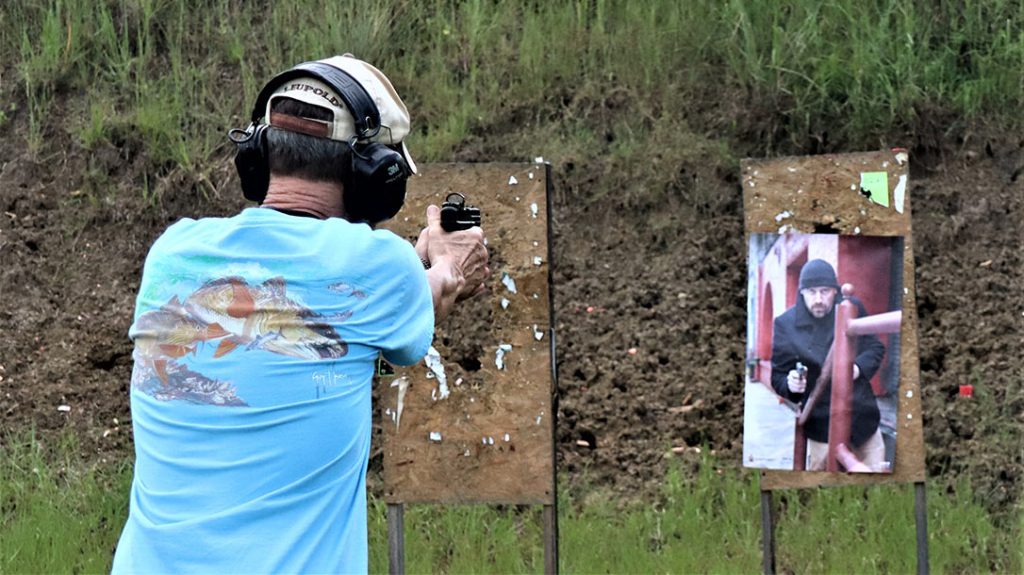
You respond by taking one big step to your left and delivering two shots to the right side of his body. All 10 shots fired in my five drill repetitions were on the body and missed the railing. This ensured no deflections from the railing. The average time was 5.09 seconds, as measured by my Competition Electronics shot timer.
Eight shots were in the chest, one shot strayed into the robber’s right arm, and the tenth shot went high and impacted just under the robber’s chin. Both of these hits outside of the upper chest can be attributed to the hard break on the trigger.
An Important Reminder
In addition, there was a failure to extract with one of the Armscor rounds. I attributed this to a case that over-expanded. Because after about 10 seconds, the brass cooled and was ejected easily upon manually cycling the slide.
In addition, more than 100 rounds had been fired without cleaning the gun. So, perhaps a combination of case expansion and powder residue was responsible for the stoppage. In any case, the other rounds from all of the test ammo ran flawlessly.
So, the stoppage can be assumed to be both a one-off occurrence and a reminder to clean and lightly lube your gun after every use.
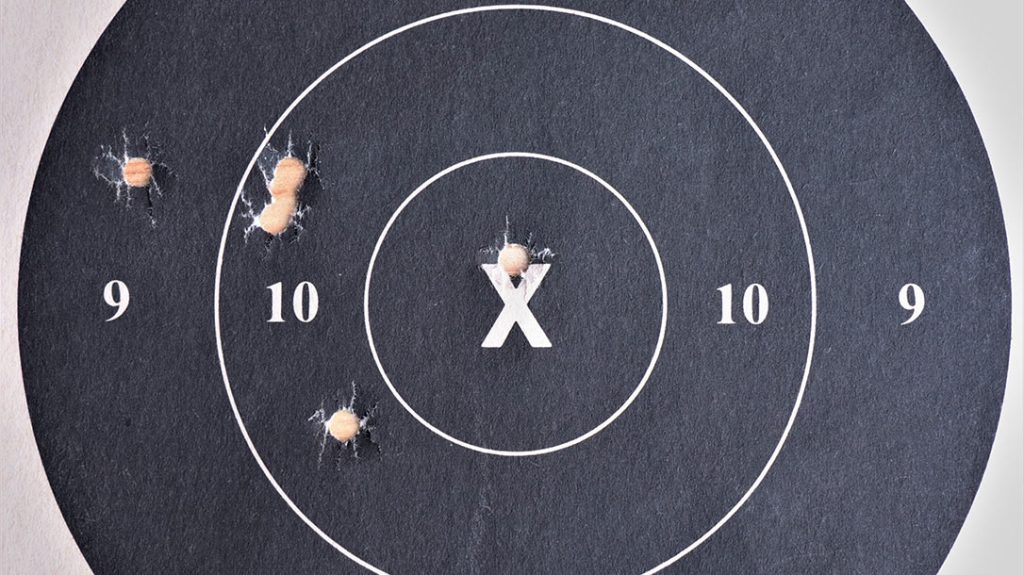
Standing Out
The Rock Island STK100 is too unique to be called a knock-off. Like many new models, it has a few rough spots, but it is based on a sound concept, is generally well-made and is accurate.
Only time will tell whether it can succeed in a market crowded with polymer competitors. Then again, when the Glock 17 first appeared, many people thought a “plastic gun” would never make it in America.
For more information, please visit Armscor.com.
Rock Island Armory STK100 Specs
Caliber: 9mm
Barrel: 4.5 inches
Overall Length: 7.91 inches
Weight: 1.8 pounds (empty)
Grips: Aluminum
Sights: Tenon cut front, fixed rear
Action: Striker-fired semi-auto
Finish: Black anodized
Capacity: 17+1
MSRP: $599
This article was originally published in the Combat Handguns January/February 2022 issue. Subscription is available in print and digital editions at OutdoorGroupStore.com. Or call 1-800-284-5668, or email subscriptions@athlonmediagroup.com.
